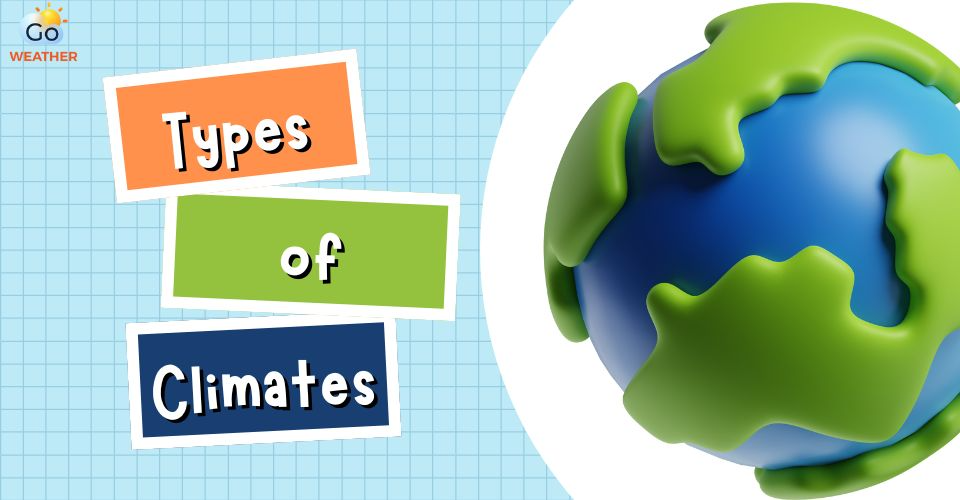What Are Different Types of Precipitation and How They Form? [Updated]
Precipitation is any type of water forming in the Earth’s atmosphere and then dropping onto the Earth’s surface. So, not only rain but also snow, hail, and several other types of precipitation are also types of precipitation. Keep reading on to learn about different types of precipitation and how they form!
.jpg)
How different types of precipitation form
What is Precipitation?
As mentioned earlier in the introduction, precipitation is water in all its forms that falls on the Earth’s surface due to gravity.
It doesn’t matter which form it takes. Once water particles grow and become too heavy to stay suspended in the air, they start falling to the ground due to the force of gravity.
So, how does precipitation form? It’s primarily the result of evaporation and condensation. Without them, it wouldn’t be possible for any type of precipitation to form.
.jpg)
Precipitation is a fundamental atmospheric process
This essential phenomenon keeps life on Earth going by replenishing water supplies, feeding vegetation, and preserving the delicate balance of ecosystems.
Precipitation can take various forms, including rain, hail, snow, graupel, etc. In the next part of this writing, we will learn about the significantly different types of precipitation and how they form.
|
You may also like:
|
Different Types of Precipitation and How They Form
Precipitation can take several different forms. Certain types are associated with summer weather, some with winter weather, and others are not necessarily seasonal-related.
In fact, the type or form of precipitation that falls to the ground depends on the temperature of the air in the clouds and the air at ground level as well.
Here are several different precipitation different types:
.jpg)
How many different types of precipitation are there?
Rain
There’s no doubt that rain is the most common form of precipitation, which consists of water droplets falling to the Earth's surface when they are heavy enough in the clouds.
Meteorologists use various terms to describe rain droplets. Drizzle is light, steady rain, while sprinkles are fine rain droplets that usually fall for short periods of time.
This type of precipitation occurs in all seasons, mainly depending on the temperature not only in the clouds but also in the atmosphere and at the ground level.
Freezing rain occurs when water droplets pass through a layer of cold air before they hit the ground and freeze upon contact.
.jpg)
Rain can occur in all seasons
All types of precipitation, including rain, form mainly from 2 types of clouds: cumulonimbus and nimbostratus.
Cumulonimbus clouds are low-lying clouds that consist of thick, puffy columns climbing into the atmosphere. On the other hand, nimbostratus clouds are the mid, dark clouds.
While nimbostratus clouds create gray, rainy days, or light snow, cumulonimbus clouds bring intense, short bursts of rain or heavy snowfall, hail, and even tornados.
Snow
Unlike rain, snow is precipitation falling in the form of ice crystals. Water vapor freezes into ice crystals in the clouds and falls to the Earth’s surface in flakes once they become too heavy to stay suspended.
Snow forms when the temperature in the cloud levels is below freezing—less than -32°F (or 0°C). If temperatures on the ground are above freezing, snow will occur. But it will also melt quickly when it hits the ground.
There’s no lower limit on the temperature at which this type of precipitation can develop. However, warmer air contains more moisture, which can create heavier snowfall.
.jpg)
Snow forms when the temperature in the cloud levels is below freezing
Snow has a complex structure. Though the ice crystals are individually formed in clouds, they stick together in clusters of beautiful snowflakes when falling.
Snowflakes develop different patterns depending on the humidity and temperature of the air. If snow falls in the form of a ball (not soft flakes), it’s called graupel.
Sleet
Sleet is probably one of the most unpleasant kinds of weather to experience. It is a form of precipitation consisting of ice pellets, often mixed with snow or rain.
Sleet occurs when melted snow or rain hits a cool air pocket above ground level. The liquid water freezes into tiny ice pellets, which collide with the ground.
Fortunately, sleet is usually so light that it bounces off the Earth’s surface, and it rarely damages crops and structures like hail, ice, or heavy snow.
.jpg)
Sleet consists of ice pellets, often mixed with snow or rain
Unlike freezing rain, which turns to ice when droplets come into contact with cold surfaces, sleet is characterized by liquid precipitation until it reaches the ground. Upon reaching the ground, the sleet had already solidified into ice pellets.
Although sleet can make surfaces slippery, it is less likely to result in the large-scale ice buildup that freezing rain is known for. In some areas, sleet is a regular phenomenon during winter storms and contributes a crisp coating to the ground.
Hail
Hail is also a common type of precipitation. It is generally associated with summer weather conditions and thunderstorms. Hail is opposite to sleet, as this type of precipitation is more likely to fall during winter-like weather.
Hail is ice, and hailstones are collections of frozen water droplets. In fact, it forms in cold storm clouds when very cold water droplets freeze as soon as they touch things like dirt or dust.
When the storm blows the hailstones into the higher part of the clouds, they are added to more frozen water droplets before they fall.
.jpg)
Hail is generally associated with summer weather conditions and thunderstorms
Unlike sleet, which is liquid when it forms and freezes as it falls to the ground, hail falls as the stone of solid ice.
Usually, hailstones are the size of small rocks. However, they can also get as large as 6 inches (15 centimeters) across and even weigh more than a pound.
Hail is a meteorological event that can be both amazing and concerning. It can harm homes, cars, and crops. Meteorologists observe thunderstorms to forecast and alert people to possible hail events.
Freezing Rain
When liquid raindrops descend from the sky and touch surfaces at or below freezing temperatures, they freeze and cause freezing rain. This occurs once a layer of warmer air above a layer of more astonishing air close to the ground occurs.
Raindrops turn liquid as they move through the warmer layer and freeze when they touch cold surfaces like power wires, trees, and the colder layer closer to the ground.
.jpg)
Freezing rain is another type of precipitation
In addition to creating hazardous driving and walking conditions, freezing rain may cause ice to build up on buildings and electrical lines.
The potential for damage and inconveniences due to the weight of the ice makes freezing rain a severe threat to infrastructure and public safety.
Meteorologists carefully monitor atmospheric conditions to anticipate and alert communities to freezing rain occurrences. This allows communities to take precautions and reduce possible threats from ice conditions.
Other types of precipitation
Precipitation can also take other forms, such as virga, drizzle, fog drip, graupel, etc.
Sometimes, different forms of precipitation occur at a time. Or in other words, they fall at the same time. For example, during harsh winter storms, it isn’t unusual for rain and sleet to fall at the same time.
.jpg)
Virga clouds
When it comes to different forms of precipitation and how they form, it’s necessary to note that there are times when precipitation does not fall.
For example, virga is a type of precipitation that also begins to fall from a cloud, but it evaporates before reaching the surface of the Earth.
Roundup
As you can see, precipitation can take several forms, such as rain, snow, hail, sleet, graupel, and others, depending on the temperature in the clouds, in the atmosphere, and at the ground level. Thanks to the introduction of radar systems and satellites by advanced technology, meteorologists can now observe patterns of precipitation across greater distances. So, in addition to being aware of different types of precipitation and how they form, you should frequently check the weather to have the best preparation if severe weather occurs.










0 Comments
Leave a Comment
Your email address will not be published. Required fields are marked *